Fountain Pen Nibs: 19 Types Explained (with Examples)
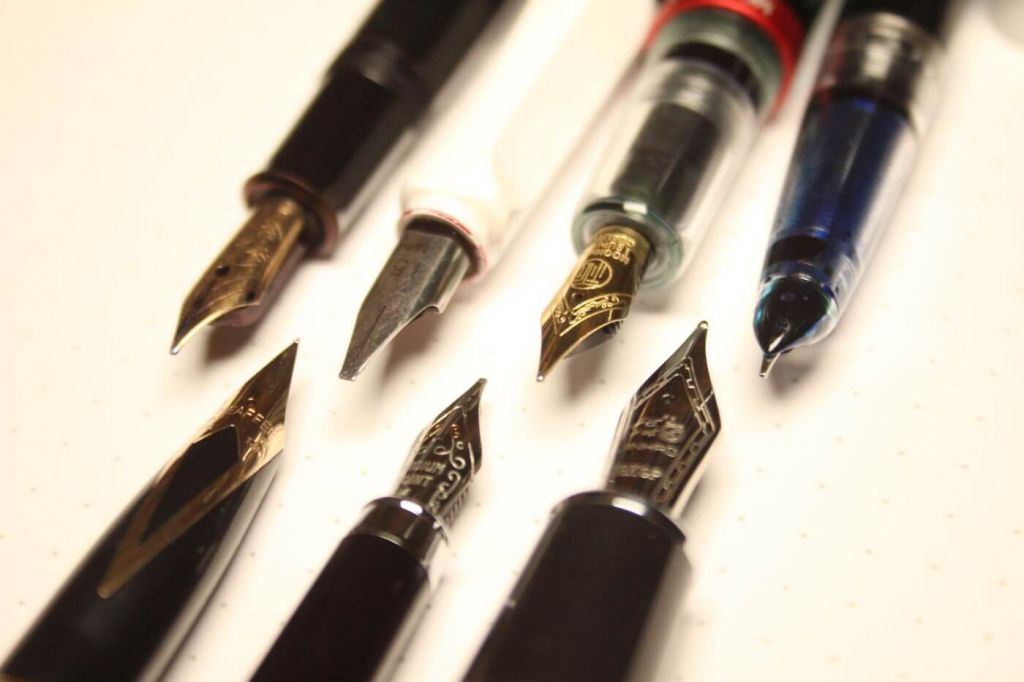
When you're first getting into fountain pens, it can be hard to understand the difference between fountain pen nib types. Below I'll give a detailed overview with pictures.
What are the most common fountain pen nib types?
Before we dive in, I want to take a quick look at what determines the nib type. After that, I'll go over each nib type with a picture and writing sample. If you want to use this article as a reference and go after one particular type, go for it. You won't have to read the entire thing.
What Determines the Nib Type?
In my mind, there are three main categories of nib types:
- regular nibs
- speciality nibs
- calligraphy nibs
Each nib falls in one of those categories. For example, a stub nib is a type of speciality nib. Most fountain pens nowadays use regular nibs. These are easiest to use and very fool-proof. On the other hands, they don't add a lot to the writing experience. With a regular nib, you basically end up having a very wet ballpoint pen. There are a lot more fun nibs to experiment out there, but you'll have to know what to look for, so let's take a look at what makes a nib.
The nib type is determined by a nib's most important features. The combination of these characteristics will determine what exact nib you have and how it will write. For each of the nibs listed below, I'll state each of these characteristics and discuss in more detail what it will do to your writing experience.
Most important features of different pen nibs:
- the shape of the tip
- nib size
- flexibility or stiffness
- width of the nib
- the material of the nib
Most nib types come in different materials and sizes, so those two features are less important in order to recognize different nib types. In this article, I want to focus primarily on what different nibs do to your handwriting. That means we're going to focus on what kind of lines these features result in on the page.
Most important characteristics of different pen nibs:
- line variation
- shading
- ink usage
- smoothness
- speed of writing
Material
The three main materials used for fountain pen nibs are steel, gold, and iridium. Steel nibs are stiffer and more durable than gold nibs. Solid gold nibs are more expensive and have different writing characteristics, which I'll discuss under Gold nibs. I have also seen chrome nibs.
Western or Japanese
This isn't a defining feature of any nib, but I did want to mention it briefly before we dive in. Western and Japanese nibs come in all different nib sizes and types, but they differ in one major aspect: same-sized Western nibs generally have a thicker line-width, while their Japanese counterpart provides a finer line-width. A good rule of thumb is to add one size for Western nibs, if you're used to Japanese nibs, or retract one size for Japanese nibs if you're used to Western nibs.
Round nib
- Tip shape: round
- Line variation: none
- Shading: only with broader nibs
- Ink usage: moderate
- Smoothness: very smooth
- Speed of writing: fast
Round nibs, or regular nibs, are the most common nibs nowadays. They are easy to write with. Their round tip shape ensures you can write at nearly all angles. These are generally very smooth nibs that provide a very consistent line-width. This consistency makes them easy to use and perhaps the best beginner nib, but it's also the most boring nib there is. As I've said before, you basically get a very wet ballpoint pen. I do prefer writing with regular nibs over writing with ballpoints, or other pens for that matter. They are great for everyday use, note-taking, and when you need to write a lot.

They come in a very wide range of widths, ranging from extra fine to extra broad for most good fountain pen brands. A lot of manufacturers only ship their pens with this type of nib, since they are so widely loved for their good (but boring) writing characteristics.
Tip sizes: Extra Fine (EF), Fine (F), Medium (M), Broad (B), Extra-Broad (EB)
The amount of ink this nib uses depends on the width you have selected. The most typical widths, fine and medium, use a modest amount of ink.
The round nib doesn't provide any line variation and will only provide shading with wider nibs. Western nibs by German brand, such as Lamy, will typically start to provide shading from medium upwards.

Left-handed nib
- Tip shape: very round
- Line variation: none
- Shading: only with wider nibs
- Ink usage: moderate
- Smoothness: very smooth
- Speed of writing: fast
What is a left-handed nib? Left-handed nibs are similar to regular rounded nibs, but they are usually smoother, rounder, and ground at an angle. This ensures you can use them left-handed, which requires the nib to perform when being pushed across the paper, instead of being pulled like a right-handed nib.
Calligraphy nib
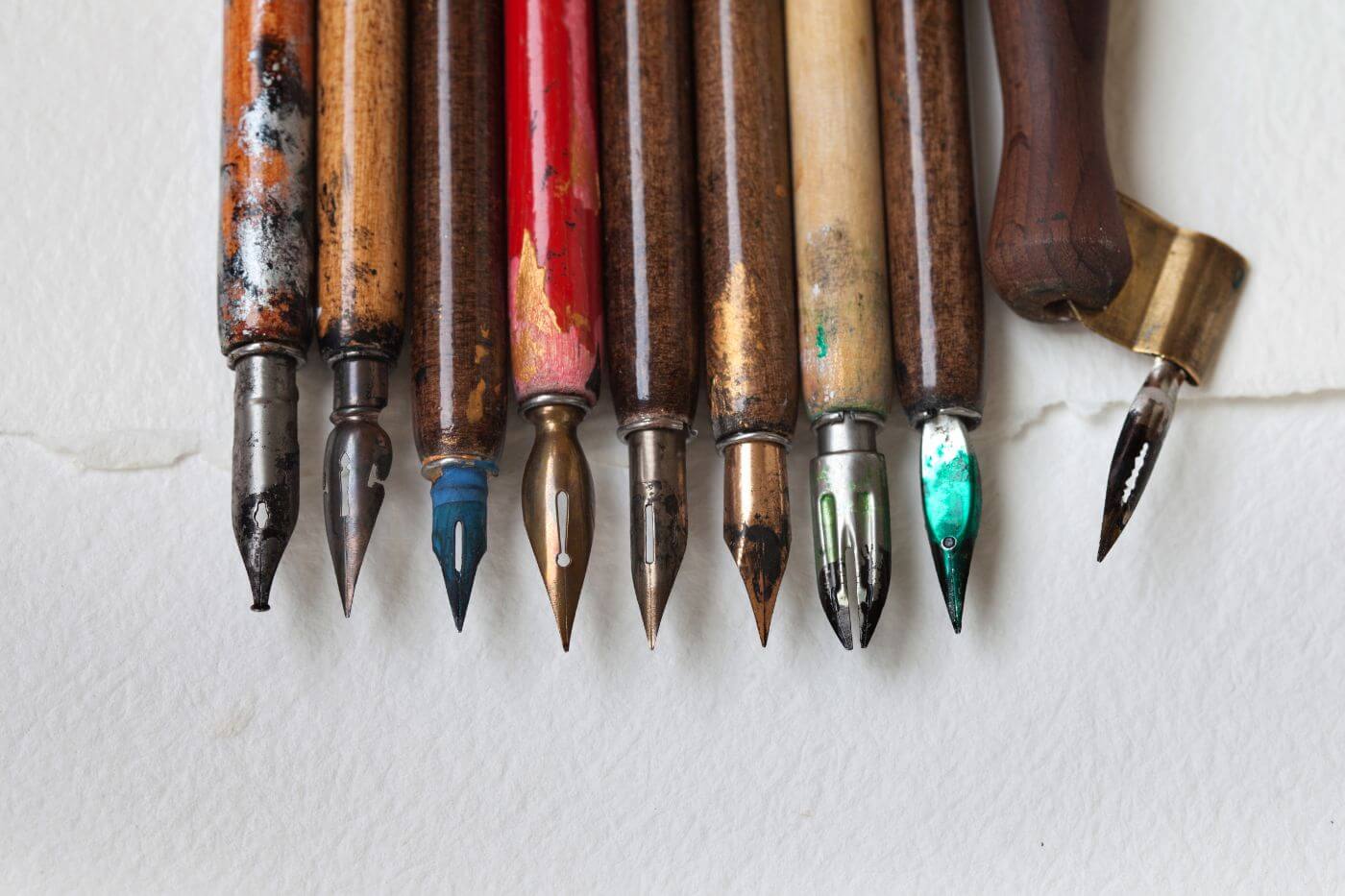
Calligraphy nibs are a group of nibs that provide line variation, through the writing angle or through the amount of pressure you apply. Examples of calligraphy nibs are cursive italic nibs, flex nibs, oblique nibs, and stub nibs. Generally, when people talk about calligraphy nibs, they mean the interchangeable nibs of calligraphy dip pens, which are flex nibs that can be used with calligraphy ink. Don't put calligraphy ink in your fountain pen: it will ruin your feed.
Italic nib or cursive nib
- Tip shape: broad, straight, flat
- Nib size: broad
- Line variation: maximum
- Shading: high
- Ink usage: high
- Smoothness: scratchy
- Speed of writing: slow
What is an italic nib? An italic nib has a broad and flat tip with a straight cut, which provides the maximum amount of line-width variation. It is the sharpest nib type available, which makes it particularly sensitive to the writing angle. A true italic nib will be able to cut paper sideways.

The italic nib, also called the cursive nib, is pretty similar to the stub and oblique nib; they are all members of the broad nibs. The italic is very broad in particular, and also very flat, resulting in a very sharp edge. They are generally stiff and very scratchy to write with. They give some amazing line variation and are a joy to write with decoratively, but they do use a lot of ink and need a feed that is able to keep up. They provide very high shading thanks to their broad and straight surface.

Stub nib
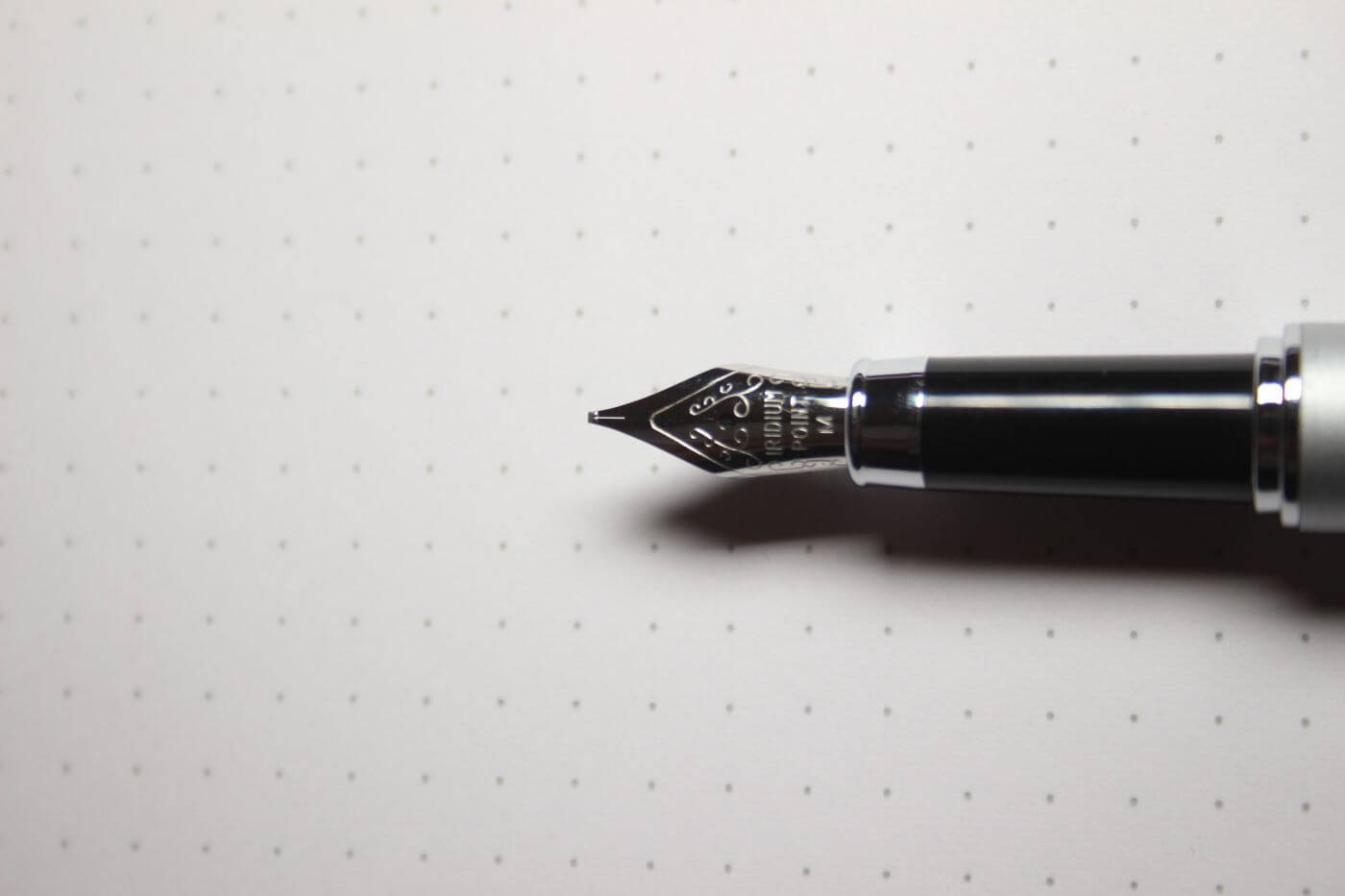
- Tip shape: broad and flat with rounded edges
- Nib size: broad
- Line variation: high
- Shading: high
- Ink usage: high
- Smoothness: reasonably smooth
- Speed of writing: medium
What is a stub nib? A stub nib has a flat, broad tip with rounded edges. This results in some line variation, providing broad downstrokes and thin cross strokes. Thanks to its rounded edges, you don't need any special technique like with calligraphy nibs. It is similar to the italic nib, without the sharp edges.
Stub nibs are great for people with larger handwriting that enjoy something more bold and decorative. A famous proponent of stub nibs is Neill DeGrasse Tyson, who loves it for writing autographs.

They provide reasonable line variation, but you write with them as you would ordinarily; thanks to the rounded edges you won't be able to cut paper like with an Italic, which makes the nib smoother as well.
Flex nib
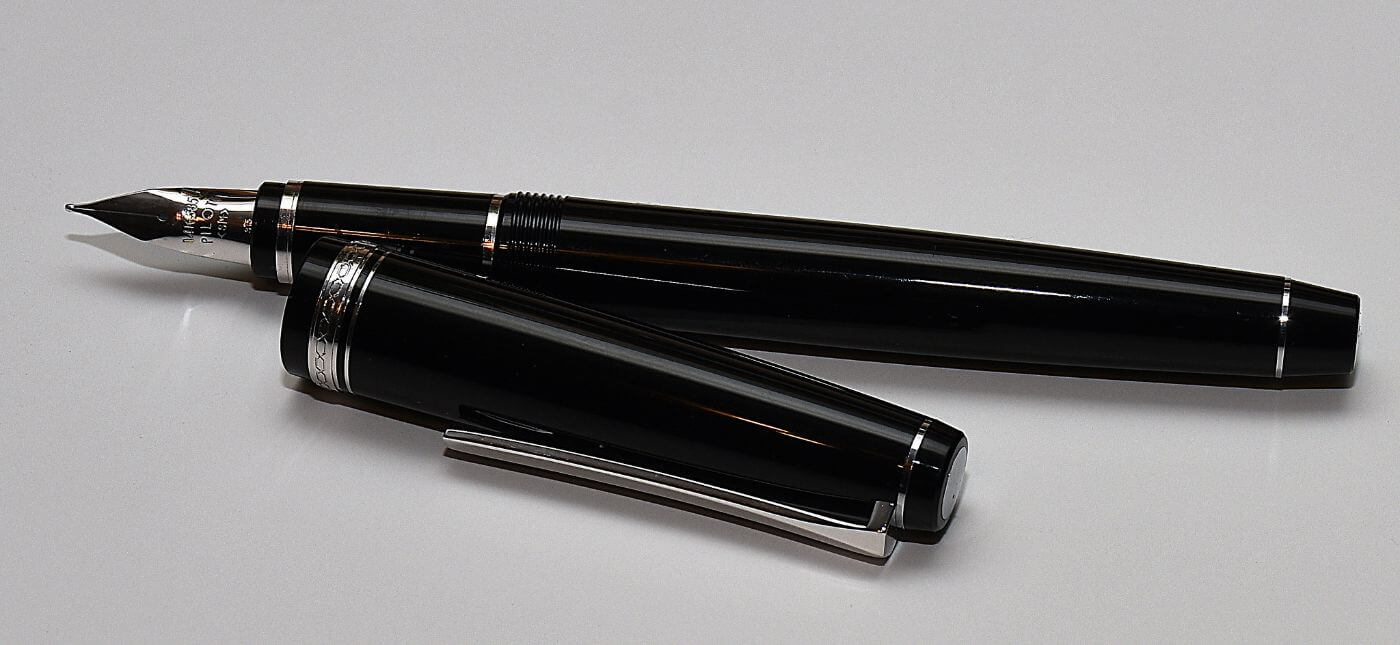
- Line variation: maximum
- Shading: high
- Ink usage: high
- Flexibility: very high
- Smoothness: scratchy
- Speed of writing: slow

Flex nibs are very soft nibs that provide line variation when applying pressure. They require some skill to use since there is a technique to them, but they are a lot of fun to use. They are a calligraphy-style nib. They use a lot of ink and need a feed that can keep up with them.
A real good beginner pen with a flex nib is the Himalaya v2 Ultra Flex Nib.
Oblique nib
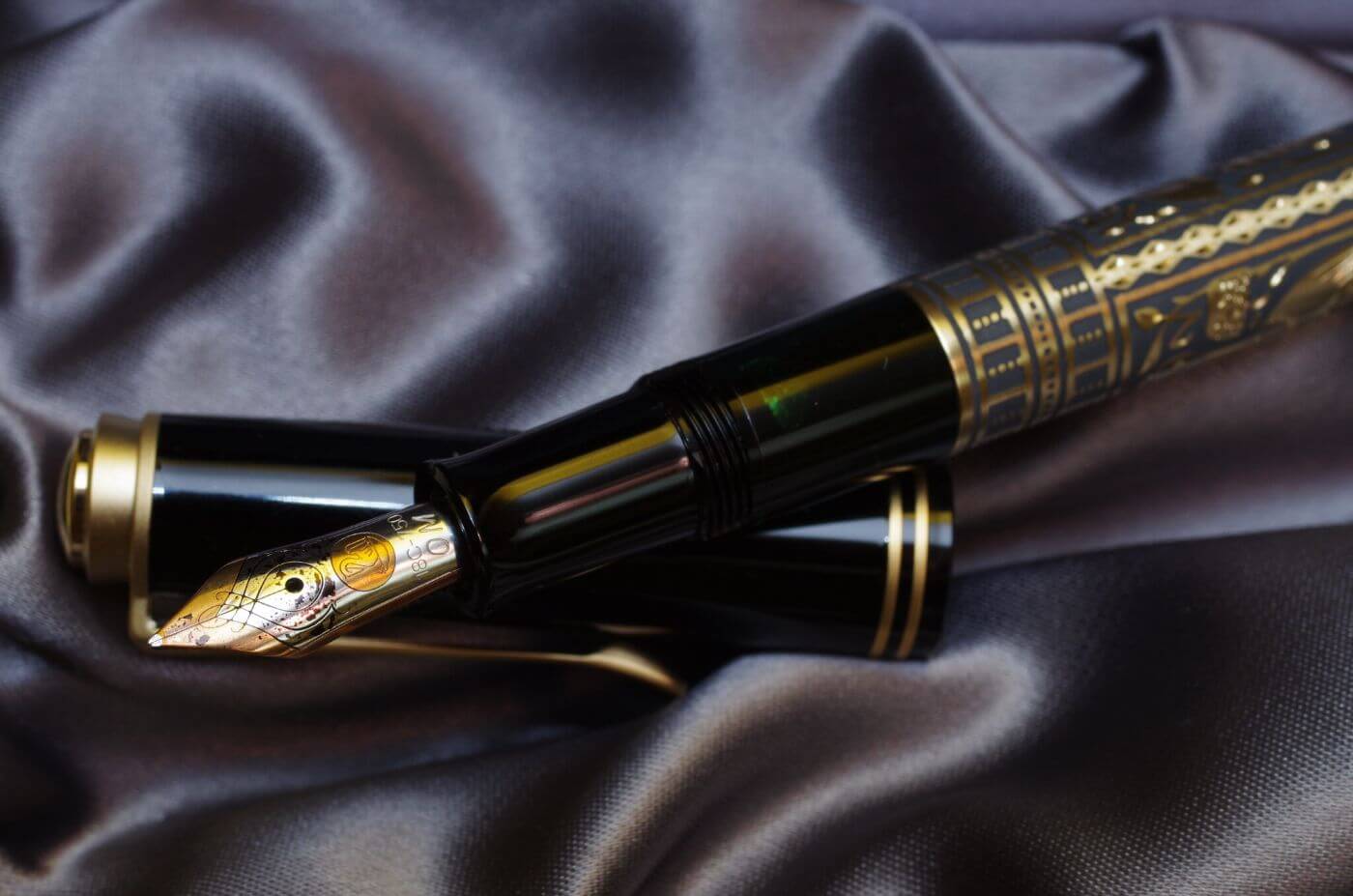
- Tip shape: broad with rounded edges, tip is cut at a 15°-angle
- Nib size: broad
- Line variation: high
- Shading: high
- Ink usage: high
- Smoothness: reasonably smooth
- Speed of writing: medium
What is an oblique nib? An oblique nib is a broad but flat fountain pen nib, cut at an angle to suit the writing angle of the owner. Usually, the angle is around 15 degrees. Thanks to its tip shape, it provides line width variation, with a broader downstroke and thinner cross stroke.
Reverse oblique nib
- Tip shape: broad with rounded edges, tip is cut at a reverse 15°-angle
- Nib size: broad
- Line variation: high
- Shading: high
- Ink usage: high
- Smoothness: reasonably smooth
- Speed of writing: medium
What is a reverse oblique nib? A reverse oblique nib is similar to the oblique nib but cut for a left-handed user. It is a broad but flat nib, cut at an angle to suit the writing angle of the owner. Usually, the angle is around 15 degrees. Thanks to its tip shape, it provides line width variation, with a broader downstroke and thinner cross stroke.
Broad nib
- Tip shape: broad and flat with rounded edges
- Nib size: broad
- Line variation: high
- Shading: high
- Ink usage: high
- Smoothness: reasonably smooth
- Speed of writing: medium
The broad nib is a family of nib types that all have a flat and broad edge. To write with any broad nib, you have to write at a slant or angle. The broad nib is also called the chisel-edge. Examples of broad nibs are the italic or cursive nib, the oblique nib, the
Architect nib

- Tip shape: narrow and thick with rounded edges
- Nib size: large
- Line variation: high
- Shading: high
- Ink usage: high
- Smoothness: reasonably smooth
- Speed of writing: slow
What is an architect nib? An architect nib has a very narrow, but thick nib tip with a straight cut. It provides large line-width variation, with thin downstrokes and broad cross strokes, making it the opposite of an italic nib. It is well suited for straight lines but is less well equipped for curves.
Architects are typically used by architects. They are especially handy for straight lines and quickly accentuating and shading lines - making them great for architect drawing. They give a lot of line variation, and with the right ink, will provide nice shading.
Accountancy nib

- Tip shape: round
- Nib size: fine
- Line variation: minimal
- Shading: none
- Ink usage: low
- Smoothness: smooth
- Speed of writing: fast
Accountancy nibs were used to fill out the books and are regular fine nibs that are extra stiff and durable. This enabled them to be used for use on carbon copy paper, where you had to apply pressure to create a carbon copy.

These nibs are very durable and a pleasure to write with if you find a good one. I happen to have a Pelikan 140 14C Extra Fine Accountancy Nib from 1955 or so. It's pretty stiff for a gold nib, but it does have some flex to it. I really enjoy writing with it, although it is a bit squeaky, which my fiancee hates like nails on a chalkboard.
Music nib
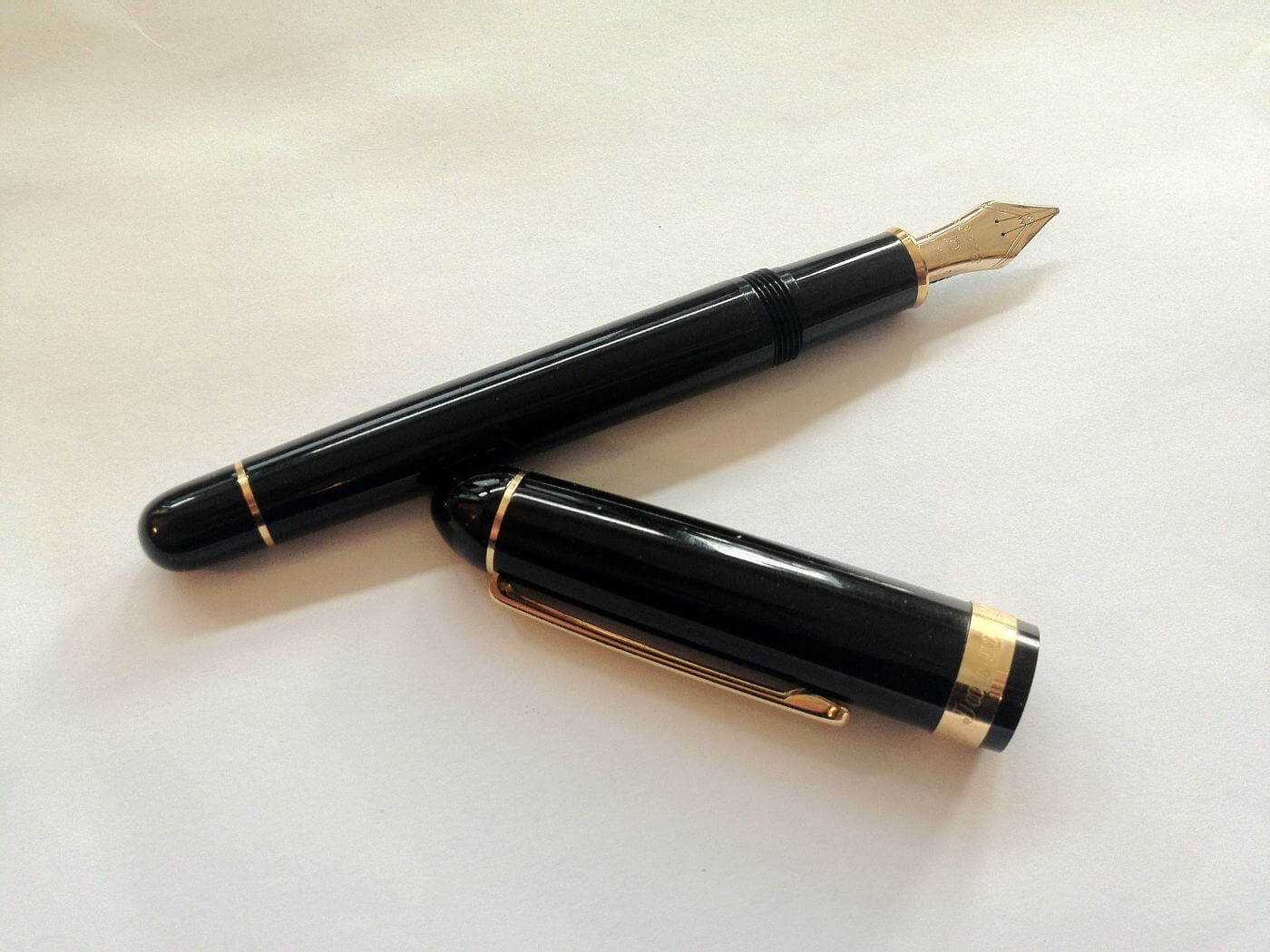
- Tip shape: trident point
- Nib size: small
- Line variation: high
- Shading: high
- Ink usage: high
- Smoothness: scratchy
- Speed of writing: slow
What is a music nib? A music nib is used for writing musical notation. The nib usually has three tines (points), but not always. The extra channel (split between the tines) provide additional ink flow, making it a wet nib. It provides a lot of line variation, allowing or easy note writing. It provides broad downstrokes and thin cross strokes.
The writing results looks a bit like that of a stub nib or other broads, with the music nib being wetter and more springy in feel, due to the slimmer tines. Because they are so wet, the drying time is long and you'll need good fountain pen paper.
Needlepoint nib
- Tip shape: point
- Nib size: small
- Line variation: none
- Shading: none
- Ink usage: very low
- Smoothness: scratchy
- Speed of writing: moderate
Needlepoint nibs have, like the name suggests, tiny and fine tips that will write like a needle. They won't perform well on cheap paper. If you want to use a needlepoint, you should use very smooth and thick paper, like Rhodia Le R, which is 90 gr/m2 satin paper.
The writing result is a lot like a fine-liner. They provide zero line variation, giving a very thin line, and they are usually stiff.
They are very scratchy, providing lots of feedback, especially with regular printer paper and the likes. For beginners, I recommend getting a regular Fine or Extra Fine nib first, since these are a lot more versatile, and will be a lot less scratchy than the needlepoint.
Needlepoints and Extra Fine nibs are excellent for people with very small handwriting and a fine touch. People who like to write larger and more quickly, should consider getting something larger and wetter.
Fude nib
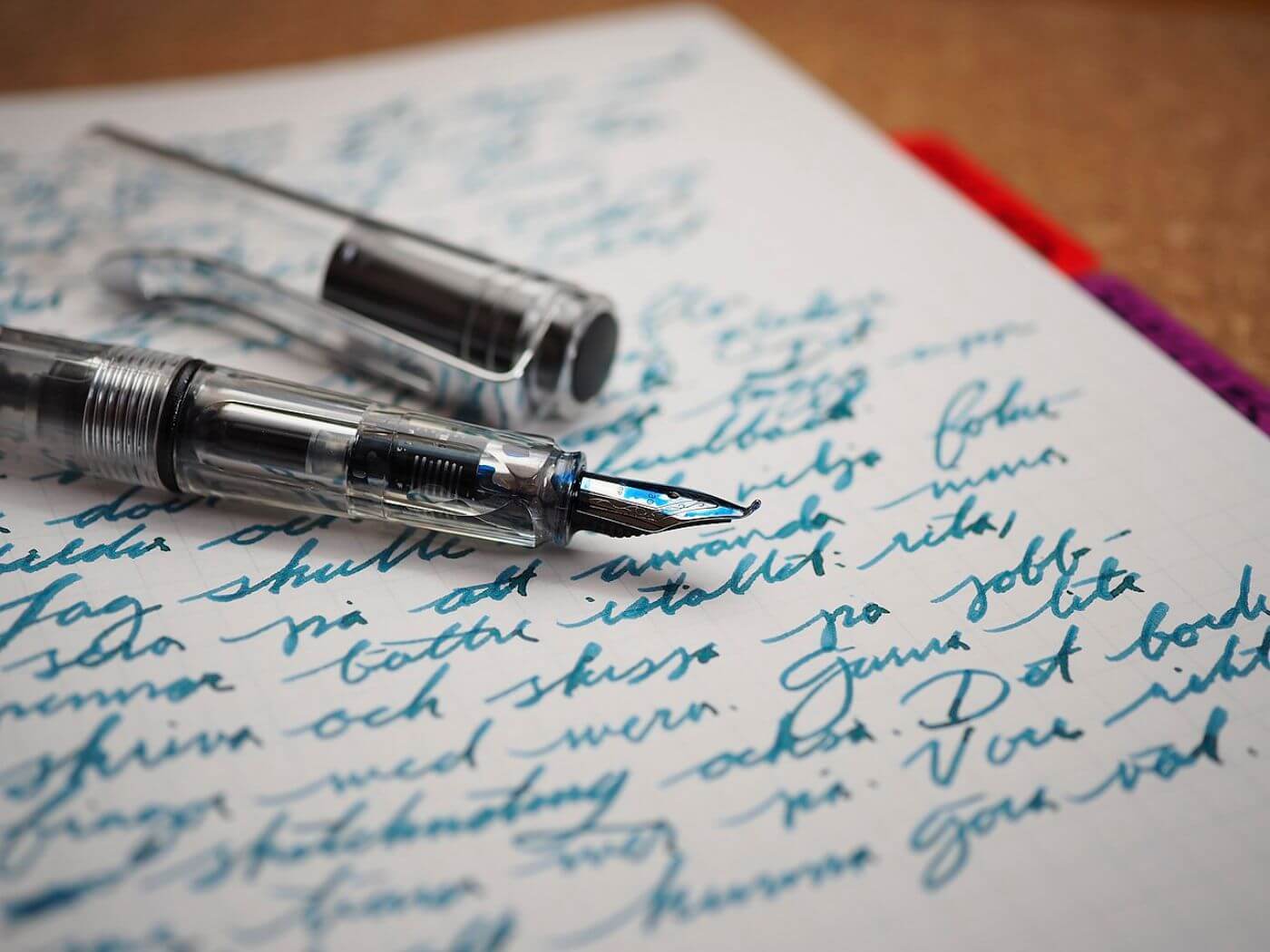
- Tip shape: long tip at an angle
- Nib size: small
- Line variation: moderate
- Shading: high
- Ink usage: high
- Smoothness: a little bit scratche
- Speed of writing: moderate
What is a fude nib? The fude nib has a long tip at an upward angle, which allows for thick lines and large line variations. It is generally used for drawing. 'Fude' translates to 'painting' or 'drawing' from Japanese. It is designed to imitate the Japanese calligraphy brush.
Zoom nib
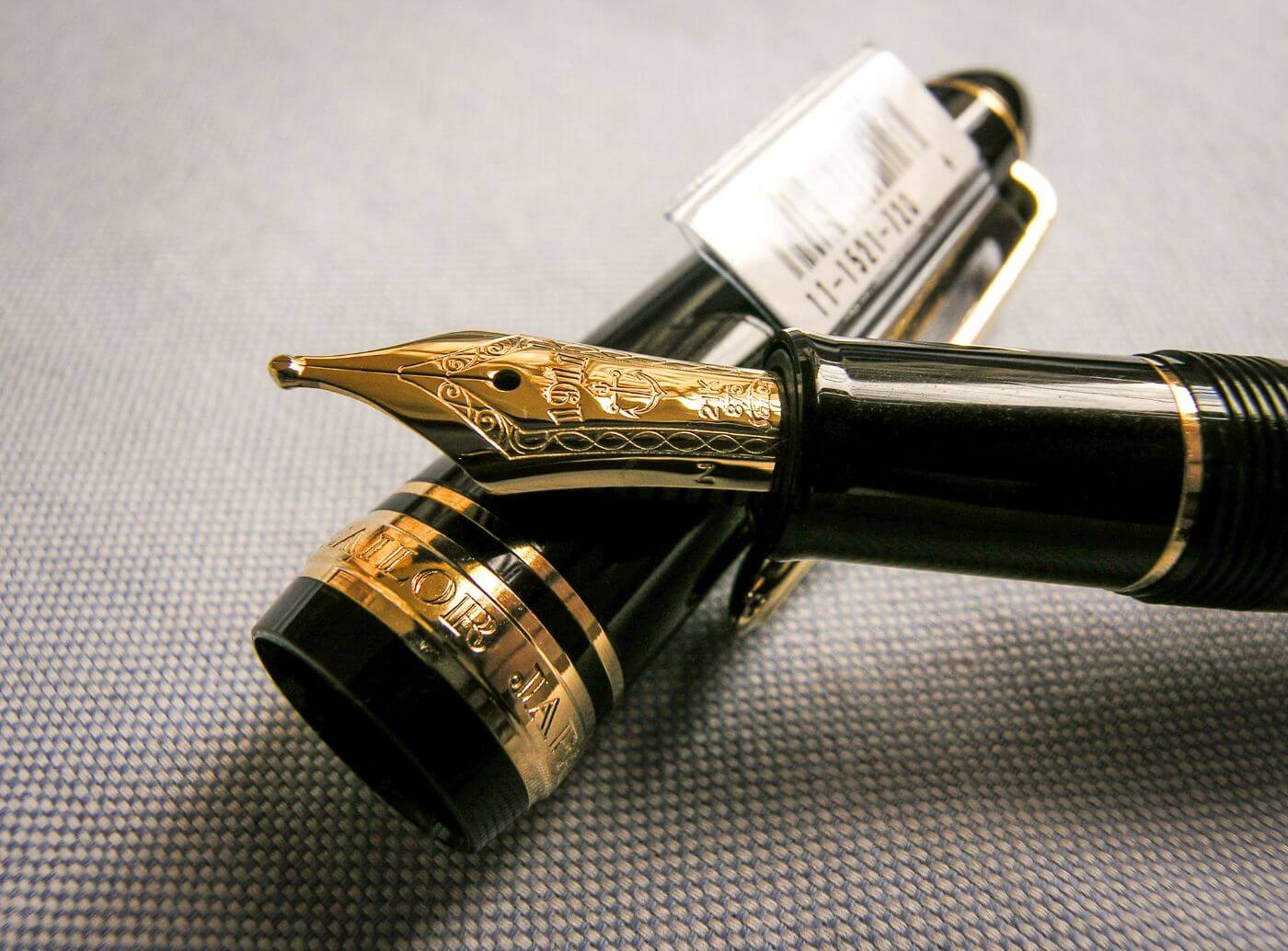
- Tip shape: bulb
- Line variation: reasonably high
- Shading: moderate
- Ink usage: moderate
- Smoothness: smooth
- Speed of writing: moderate
What is a zoom nib? The zoom nib is a nib that produces different line widths, depending on the writing angle. It has a bulb-shaped tip, which gives a thin line when writing at a higher angle, and a broad line when hold at a lower angle.
Hooded nib
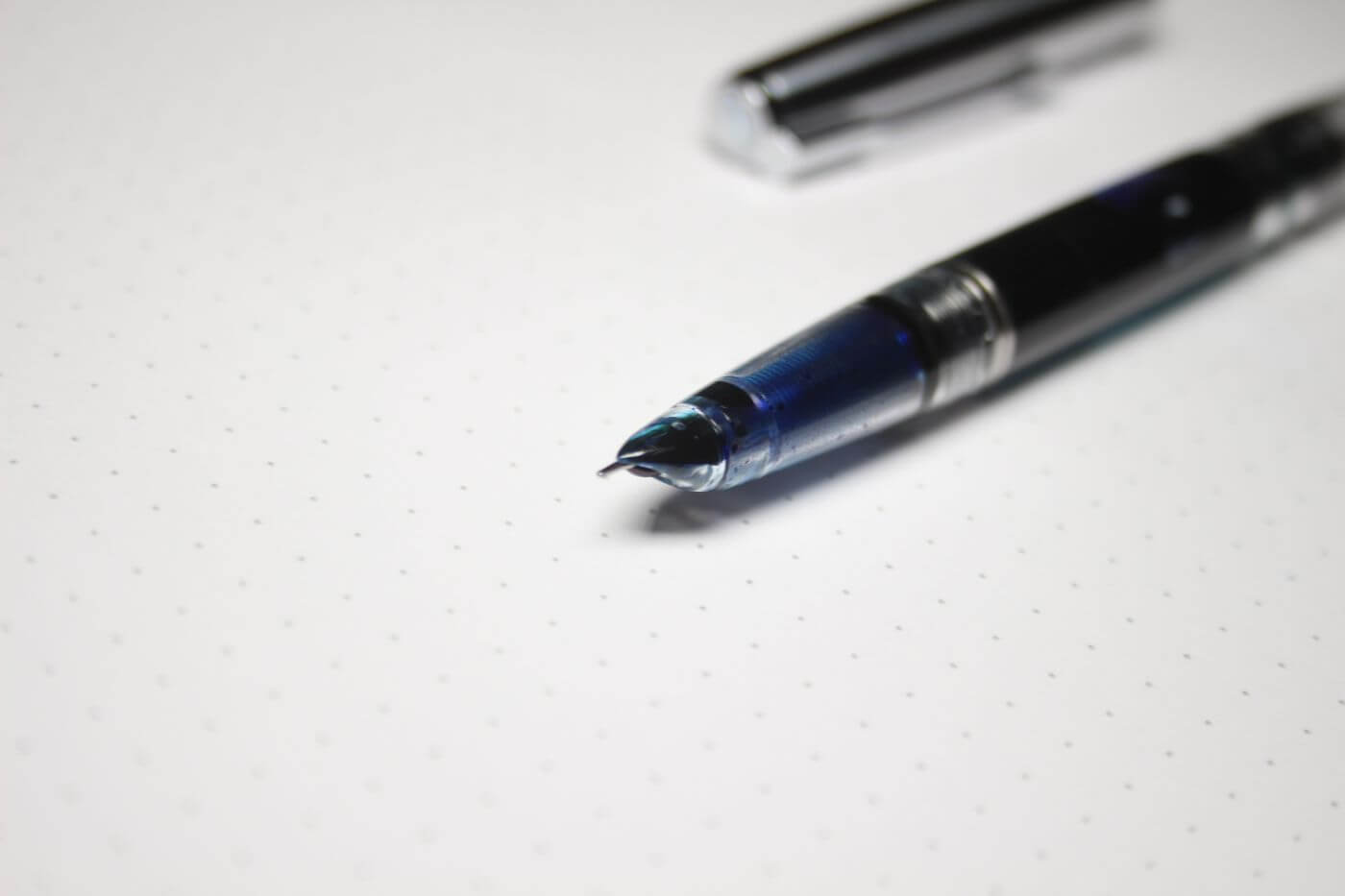
Hooded nibs are small nibs that are encapsulated in the pen, with just a small part of the tip sticking out. This design prevents the pen from drying out, making it a great pen for note-taking. You can use these nibs uncapped for extended periods of time.
Popular examples of hooded nibs are the Lamy 2000, Parker 51, or the Wing Sung 601.

Gold nib

Not really a nib type, but rather a nib material, that does affect the writing experience a lot. Gold nibs are generally made of 14K gold, since softer alloys would be extremely soft. Gold nibs are a lot softer and have a more springy feel to them than steel nibs. They are less stiff and usually allow for a bit of flex, and with that also a bit of line variation. But don't expect massive variations, as regular gold nibs are not meant to be flex nibs.
There are fake gold nibs out there, so look for the 14K or 14C stamp on the nib. If it doesn't have it, it most likely is gold-plated.
Gold-plated nib
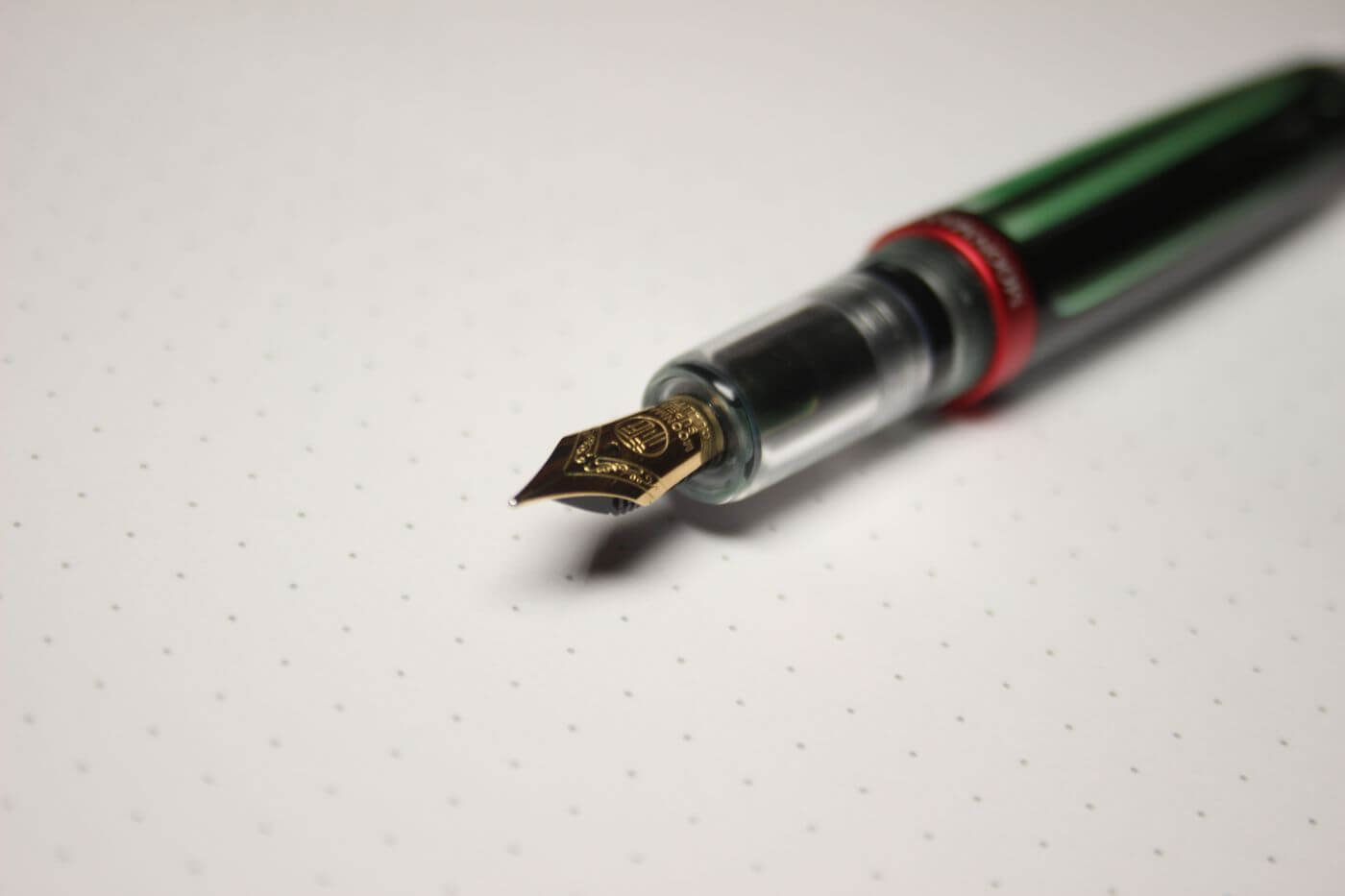
A lot of manufacturers provide gold-plated nibs to give a more premium feel to their nib. With gold-plated nibs, there is a regular steel nib underneath, so it's mostly a decorative thing and doesn't affect the writing experience in any way.
Iridium nib
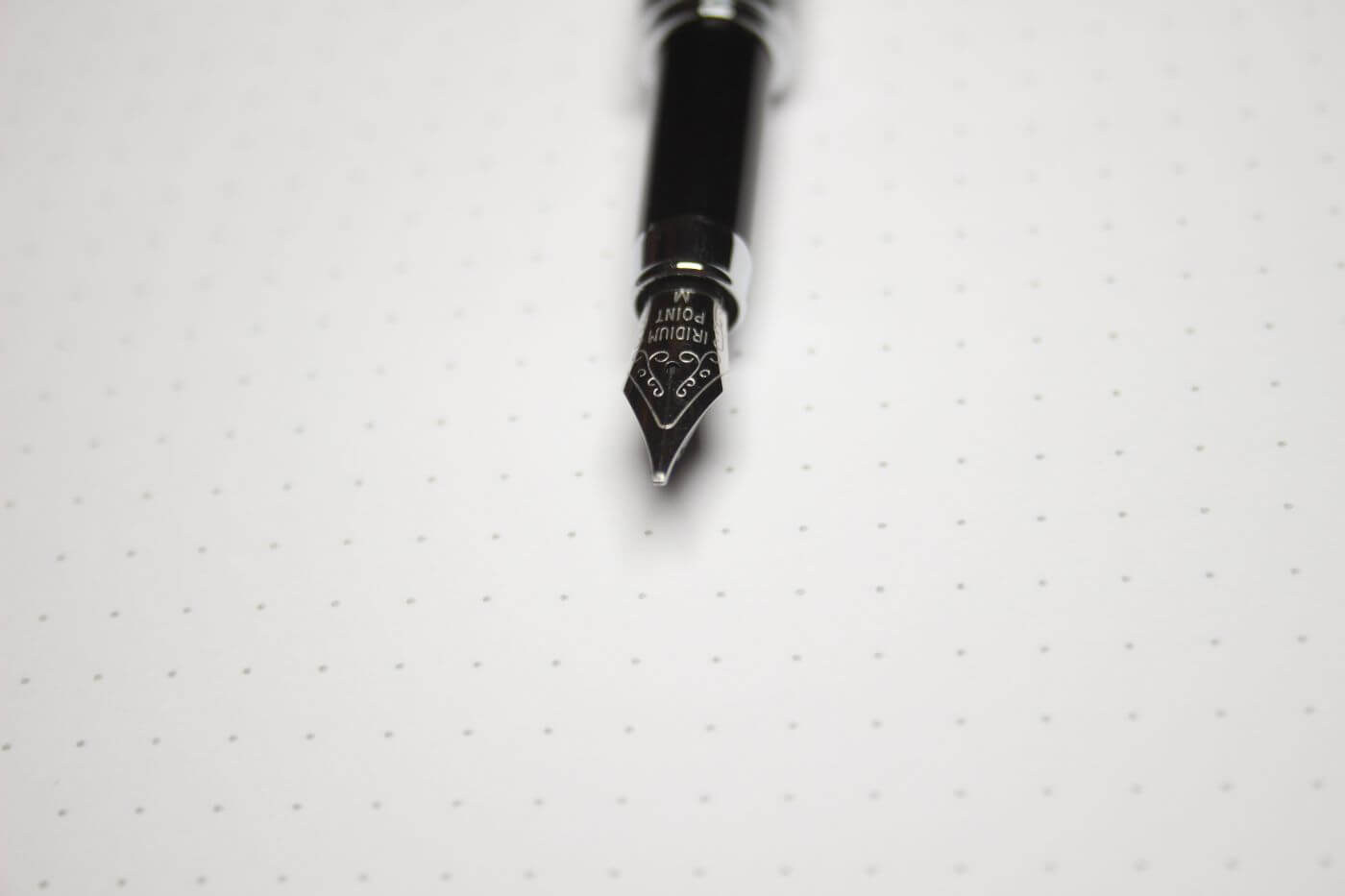
A lot of nibs are said to be dipped in iridium, which is a very hard metal element that was used back in the old days to protect fountain pen nibs against wear and corrosion. Interestingly, Kurt Montgomery studied the composition of pen nibs in 1996 and concluded 'nobody uses iridium anymore'. You can read the article at Nibs.com.
Did you find the answer to your specific question?
👍 95 👎 24
Comments
Beverley Clark White
hello, have you ever found a pen nib with the name: nimox written on it, and the “o” in the word is shaped like a child’s depiction of the sun with rays coming out of it…I purchased a feather pen with this type nib in it and I cannot find out anything about it…
Bev
rob g
I used to use osmiroid pens with oblique nibs in different sizes. do they still exist?
Rob
What are the hood nib stats?
Sherri
I have 2 nibs from my mother in law that have a double flat, quite broad nib. They are probably from the 40’s or 50’s
Do you know what the are called and what they are for?
Leave a comment